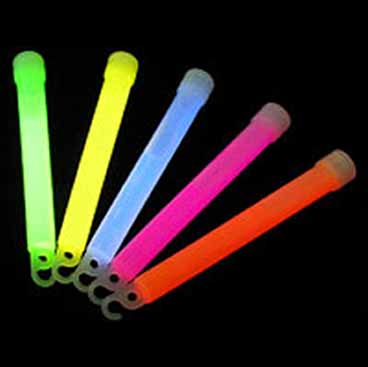
Why should anyone be aware of chemical reactions? In chemistry one can see how molecules interact with each other and understand how things work. Chemical reactions can help in your daily life, for example when digesting food. By knowing how food is digested one can know what nutrition is needed in order to stay healthy. Here is a link to explain more about why we should be aware of chemical reactions. http://www.helium.com/items/2037177-importance-of-learning-chemistry
Another common reaction used in everyday life is glow sticks. Glow sticks are used by scuba divers and campers in order to see in the dark. The chemical reaction of the glow stick is hydrogen peroxide solution, phenyl oxalate ester and fluorescent dye solution nixed together This reaction releases energy just like an incandescent light bulb. The electrons then become excited and race to a higher energy level then returns to the normal energy level releasing the energy as light. This is called chemiluminesence. There are more steps involed for this chemical reaction. Here is a link explaining more on how the glow stick works and the process of it. http://science.howstuffworks.com/innovation/everyday-innovations/light-stick1.htm. Here is the final chemical equation for the glow sticks ;cyalume + H2O2 + dye → trichlorophenol + 2CO2 + dye[♦]Here is also a link to a video that will show how to make a home made glow sticks. http://www.youtube.com/watch?v=kH19EIf5GtE


